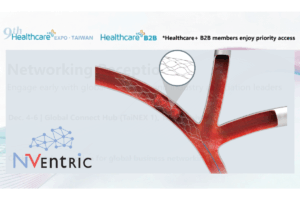Table of Contents
As the demand for innovation and personalized healthcare solutions grows, medical device companies are accelerating their investments in 3D printing technology. The industry is experiencing rapid expansion, driven by the need for customized solutions and improved patient outcomes.
Market Growth and Adoption
According to GlobalData, the medical 3D printing market is expected to double from $2 billion in 2022 to $4 billion by 2026, with a compound annual growth rate (CAGR) of 21%. This surge underscores the increasing role of additive manufacturing in creating patient-specific implants, prosthetics, and surgical tools. While bioprinting is still in its infancy, it holds the potential to revolutionize regenerative medicine by producing custom tissues and organs for transplantation.
Expanding Certification for Quality Assurance
Stratasys Direct, a major supplier of 3D printing services for the medical industry, has played a crucial role in advancing the technology. Recently, the company’s Tucson, Arizona facility achieved ISO 13485 certification, a globally recognized standard for quality management in medical device manufacturing. To meet rising industry demand, Stratasys now plans to extend this certification to its Texas and Minnesota facilities.
At the 2025 MD&M West conference, Stratasys Direct’s manufacturing engineer, Amy Vaughn, discussed how the company is pushing the boundaries of medical 3D printing and why it has the potential to replace traditional manufacturing methods like injection molding.
Unlocking New Possibilities
Before joining Stratasys Direct, Vaughn worked in silicone injection molding and witnessed firsthand the constraints of conventional manufacturing.
“For instance, a doctor needed a specialized catheter for infants, but the cost of creating a mold made it impractical. We could only produce a single version,” Vaughn explained.
She emphasized how traditional methods lack the flexibility to accommodate the diverse needs of medical patients. Additive manufacturing, on the other hand, enables the creation of highly customized prosthetics, surgical guides, and medical tools that would otherwise be unfeasible.
While industries like automotive and aerospace have widely embraced 3D printing, the medical device sector is still discovering its full potential.
“Many professionals in MedTech aren’t aware of what additive manufacturing can truly achieve,” Vaughn said. “They don’t realize that 3D printers can create highly detailed structures, or that technologies like PolyJet and digital light processing (DLP) can print complex geometries and flexible materials.”
Overcoming Challenges
Despite its advantages, 3D printing still faces limitations, particularly in scalability. The process remains slower than traditional manufacturing when producing large quantities of parts.
“We haven’t reached the production speeds of injection molding yet,” Vaughn admitted. “Molding requires a significant upfront investment, but once in place, it can produce thousands of units efficiently. However, additive manufacturing is more cost-effective for small-batch, customized production.”
She believes that with further advancements, 3D printing could eventually rival injection molding. “The technology needs to evolve to handle mass production at a competitive speed. Right now, it excels in small-scale, custom work, but future developments must focus on achieving high-volume efficiency.”
The Path Forward: Automation and R&D
To make large-scale 3D printing a reality, investment in automation and research is crucial.
“That’s the direction we’re aiming for,” Vaughn said. “Optimizing workflows, integrating robotics to automate part removal, and enhancing printing efficiency are all potential solutions. If not that, then R&D will play a critical role in pushing the technology forward.”
As 3D printing continues to evolve, it is poised to redefine medical device manufacturing, offering greater customization, improved efficiency, and ultimately, better patient care.







